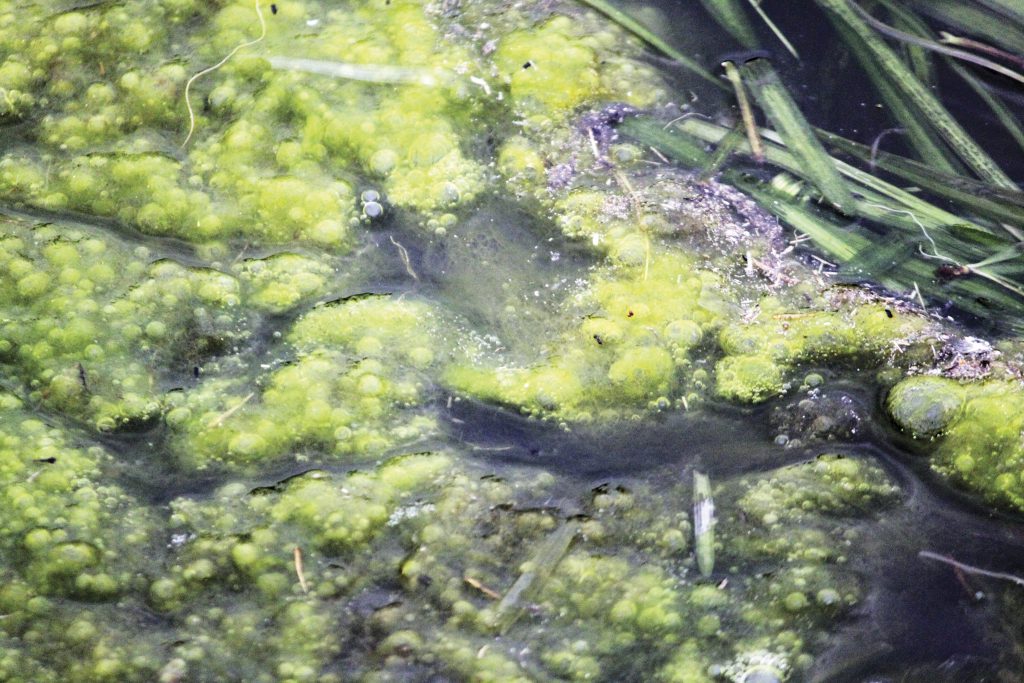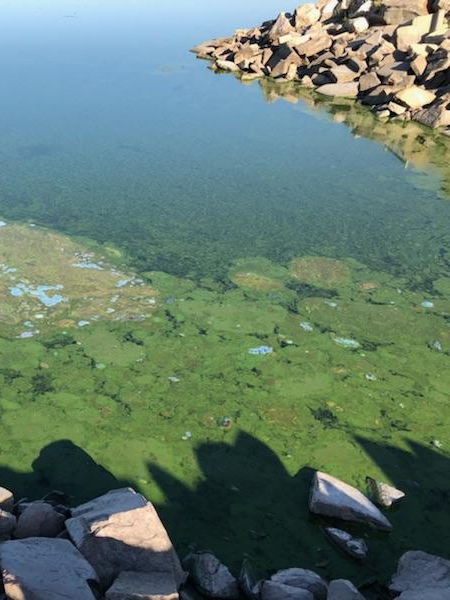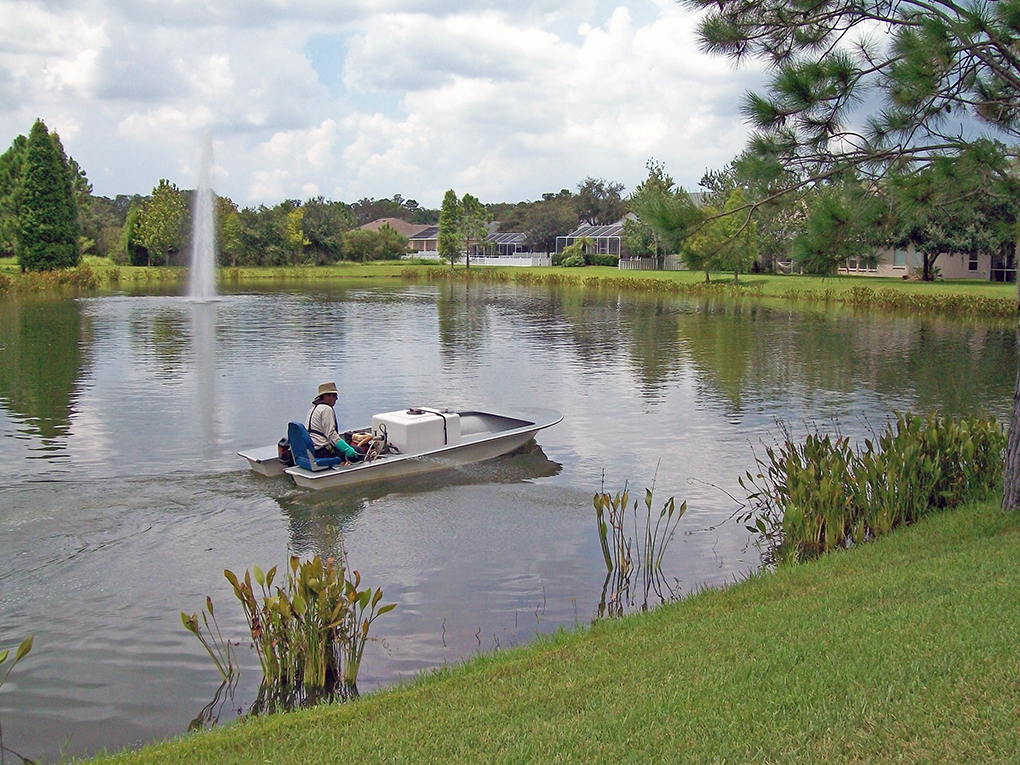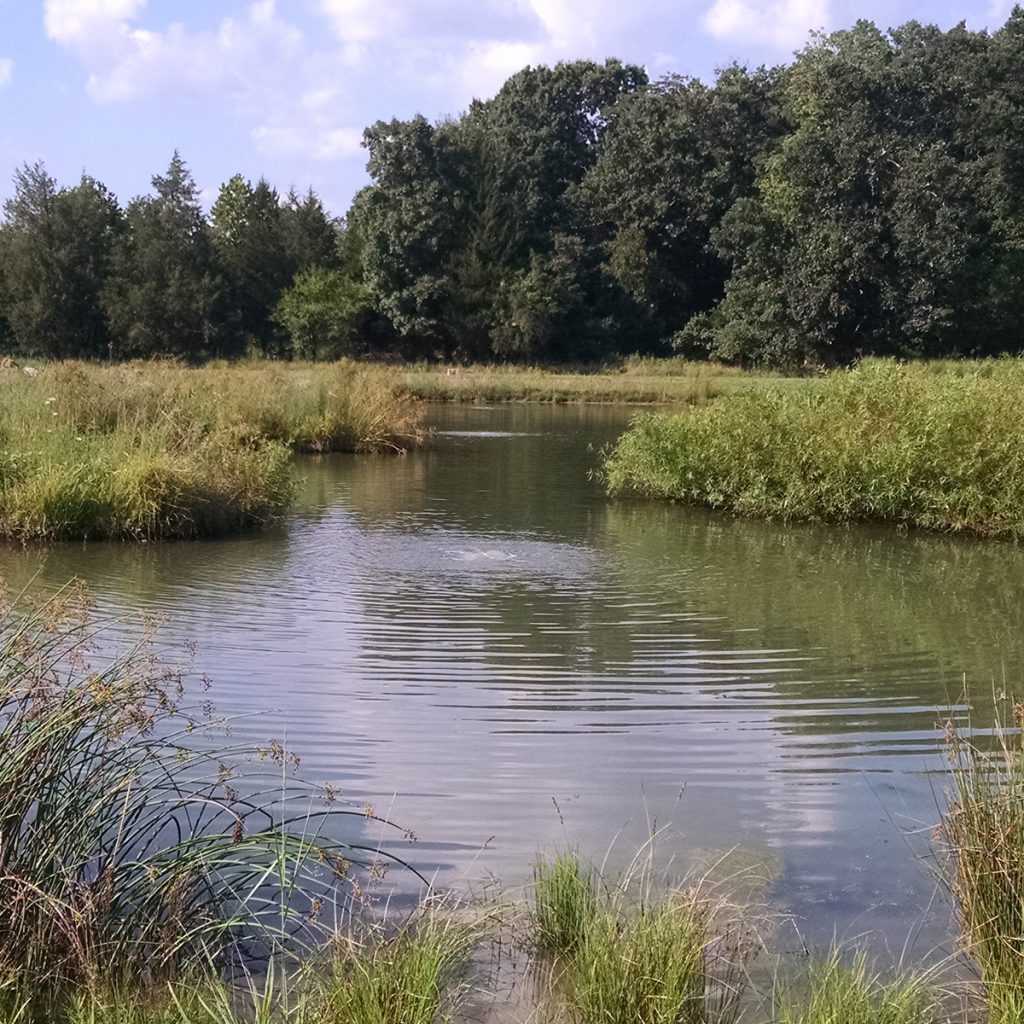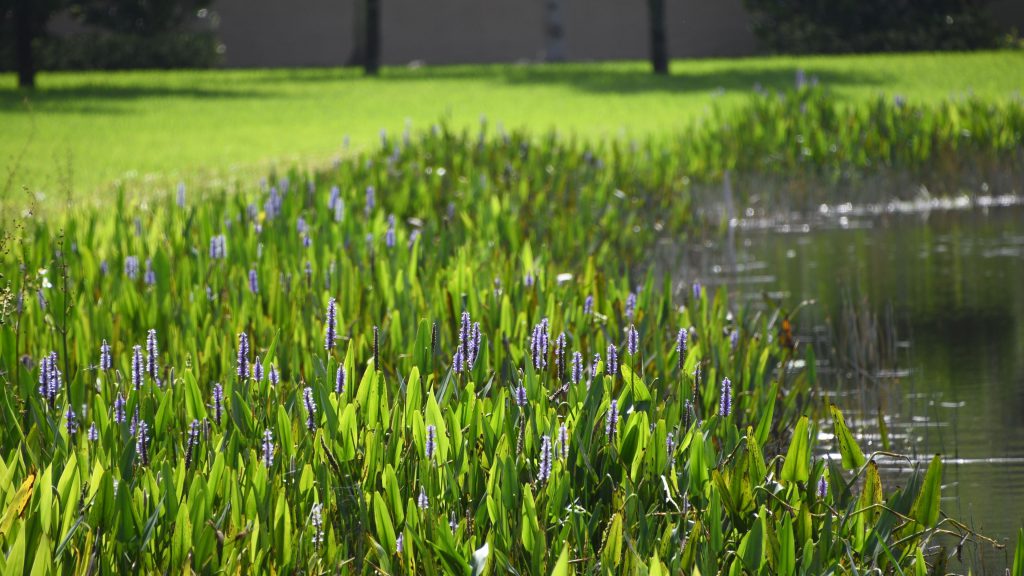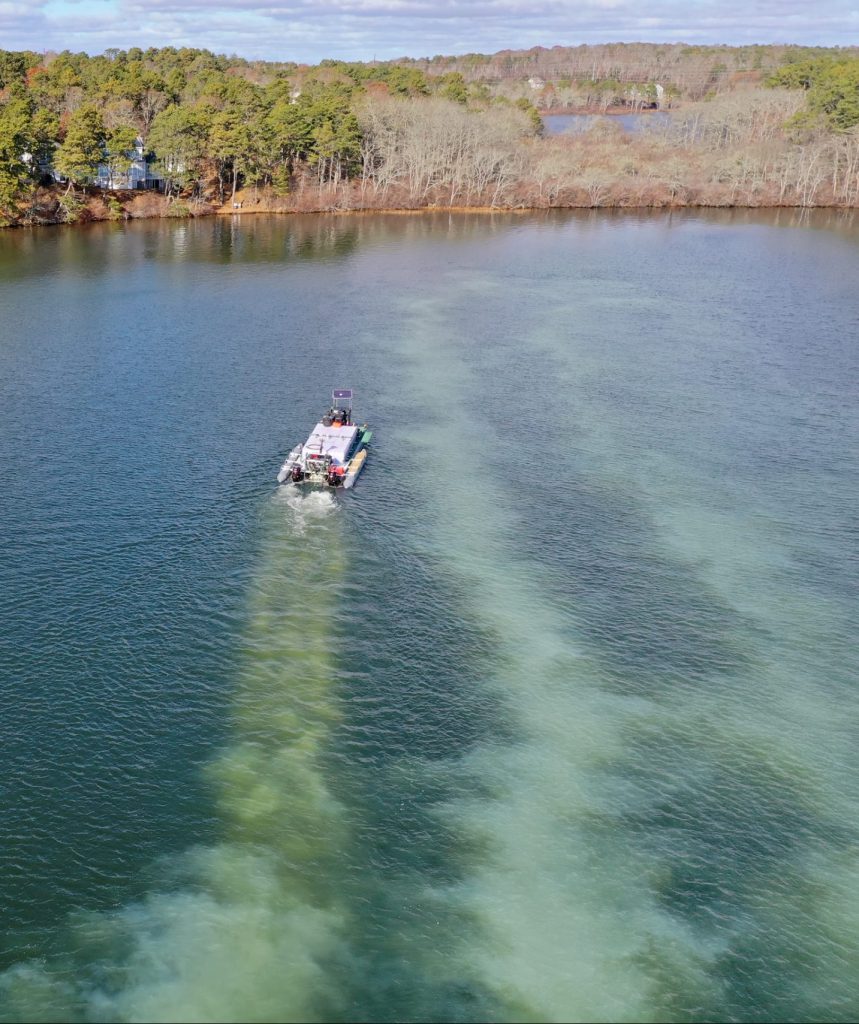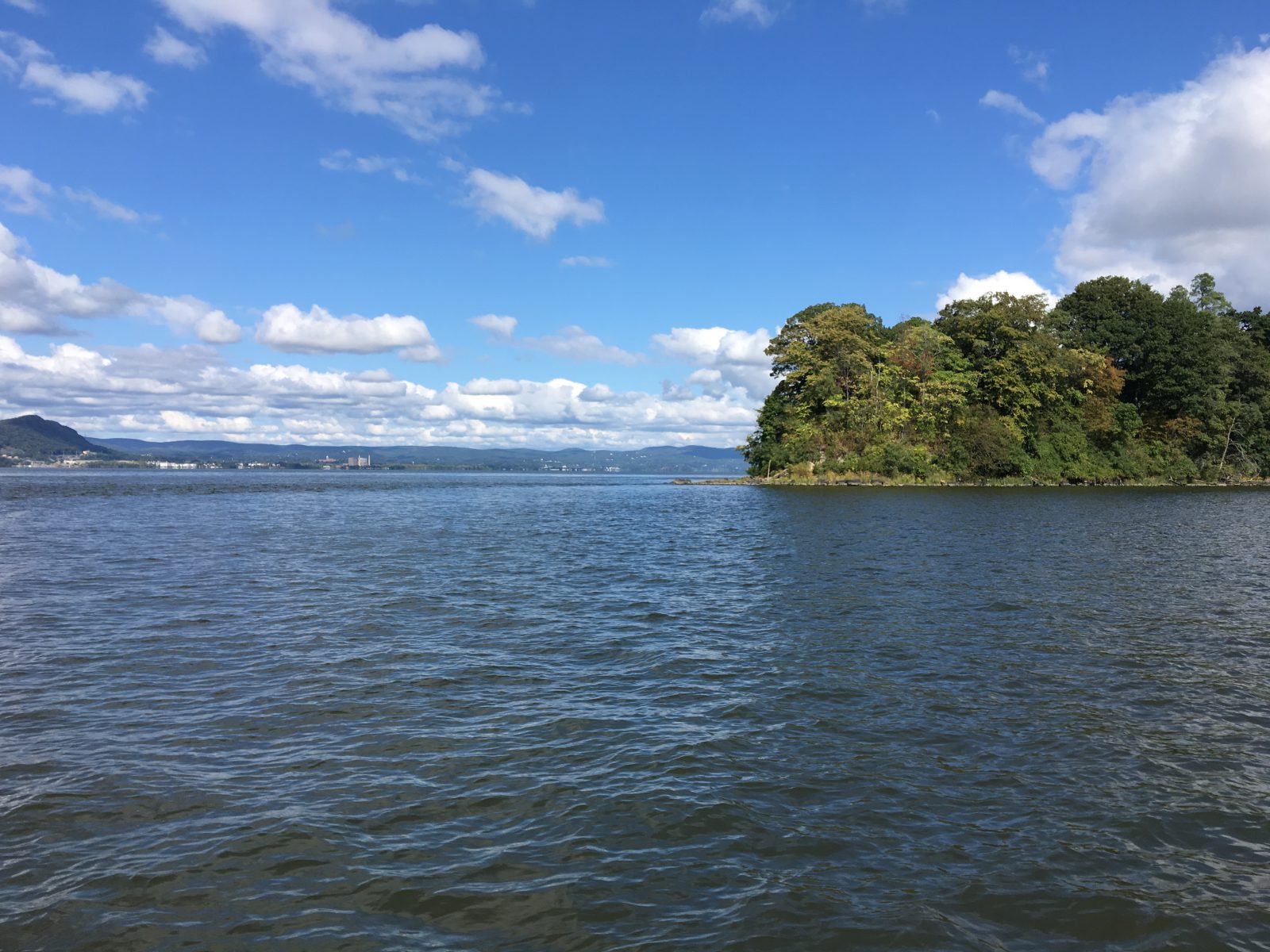
The Guide to Understanding Algae and Improving Water Quality
Many of us look forward to the spring and summer months for swimming, boating, and overall time spent around lakes and ponds with our loved ones. We all have a positive memory on the water, whether that’s learning to fish with grandparents or doing cannonballs off a dock with friends and family. Unfortunately, these water activities can be interrupted if nuisance algae or toxic cyanobacteria develop in our beloved aquatic ecosystems.
Algae is an issue for lakes and ponds of all sizes. Once it has taken over, getting rid of it can seem like a never-ending task. Algaecides may offer short-term results; however, proactive lake and pond management is the best solution for long-term success. A proactive approach works with nature to solve the problem by naturally restoring balance to the ecosystem.
What Causes Algae in Ponds?
Many large waterbodies, particularly those that are not professionally managed, contain an excess of nutrients like nitrogen and phosphorus, which feed the growth of pond weeds and algae. If nutrient levels are not balanced, muck and sludge can build up over time. Harmful types of bacteria and parasites can find a home in the muck and sludge, creating an unhealthy aquatic environment.
Excess nutrients are typically driven through runoff created by urban development and human activity. Fertilizers, sewage, chemicals, and animal waste from surrounding areas can all make their way into the lakes and ponds via stormwater runoff and contribute to nutrient loading in waterbodies.
In the presence of excess nutrients, algae growth becomes out of balance with the other plants in the waterbody. Coupled with high nutrient levels, algae can quickly take hold in warm, shallow, stagnant water. As the algae take over large lakes and ponds, the healthy ecosystem is damaged, and fish and other wildlife may begin to die off. This further degrades the ecosystem as it creates more food for algae and continues the cycle of overgrowth.
The Importance of Controlling Algae
Dense algae mats on the water can result in less light penetrating the water column, which may hamper the growth of beneficial aquatic plants and reduce the amount of dissolved oxygen in the deeper layers. The beneficial aerobic bacteria in the soil will start to die, causing the waterbody to become even more unbalanced. As water quality continues to deteriorate, fish kills may occur, further degrading the water quality of the lake or pond and effectively rendering it unusable.
Algal blooms can be easily identified by a change in coloration of the lake or pond’s water due to the increased density of pigmented algal cells. Many kinds of algae can create blooms; however, some harmful cyanobacteria or blue-green algal blooms have the capability of producing dangerous toxins that affect many organisms, including fish, pets, livestock, waterfowl, and humans.
How to Identify Types of Algae in Lakes and Ponds
Filamentous: Like most algae, this type provides food for fish, insects, and fish. It grows into a mat that looks like wet wool floating on top of the waterbody. It can quickly take over any waterbody and cause ecosystem imbalance without proper management.
Cyanobacteria (Blue-Green Algae): This type of algae can consist of a single cell or be filamentous or colonial. It can rise up to the top of waterbodies, creating a layer of blue or “pea soup” green scum. It can also appear as dark green or black mats of filamentous algae.
Planktonic Algae: This type of microscopic algae floats in the water and is the foundation of every waterbody’s food chain. It can cause the water to look brown, reddish, or green and is sometimes mistaken for muddy water. Blooms can appear rapidly, changing the color of a clear lake within a couple of days. It is important to the food chain but needs to be carefully managed in proper balance.
Muskgrass: Because of its leaf-like and stem-like appearance, this type of algae resembles land plants. Muskgrass grow on the bottom of a lake or pond and can benefit water quality by creating valuable fish habitat; however, it also runs the risk of overgrowing.
Nitella (Stoneworts): This type of algae has stems that are comprised of chains of single cells shaped like tubes and cells that look like whorls branched off from the main stem. It provides food for wildlife and fish, but under certain conditions, it can be a nuisance to swimmers and boaters.
Algae Control for Lakes and Ponds
Although a lake or pond may seem to be doing well for years, ongoing management is crucial to ensure its continued health. Sometimes, problems can develop for long periods of time before manifesting. Sooner or later, these issues will rise to the surface, and the waterbody will become extremely ecologically imbalanced.
This is why keeping lakes and ponds healthy is an ongoing process and not a one-shot deal. Problems don’t happen overnight and they can’t be solved overnight. It takes time, but the issues can be resolved, and smelly, stagnant, unusable lakes and ponds can be returned to health.
For existing algae issues, EPA-registered aquatic algaecides may be used for algae control and should be applied in proper doses by licensed professionals. This is an effective solution, but should never be considered a long-term management tool. Proactive management solutions are the key to maintaining healthy water quality.
Maintaining Healthy Water Quality
Maintaining healthy water quality starts with managing excess nutrient levels. Nutrients like phosphorus and nitrogen fuel water quality issues like algae and aquatic weeds. When nutrient levels are balanced, water quality issues are less likely to form.
Healthy water quality can be maintained through a combination of sustainable management solutions like aeration, beneficial buffers, and nutrient remediation. These solutions help maintain healthy water quality in lakes and ponds by preventing high nutrient levels.
Increase Dissolved Oxygen Levels with Aeration
One of the most common sustainable solutions lake and pond management professionals recommend is aeration. Introducing floating fountains and submersed aerators helps keep water moving and helps improve dissolved oxygen levels. Fountains are also stunning focal points in large lakes and ponds, creating value for the communities surrounding the water. In addition, new innovations like side-stream saturation can be used to directly target oxygen-deficient layers with concentrated dissolved oxygen. The process of introducing dissolved oxygen into the water column helps prevent nutrients from getting out of hand.
Filter Excess Nutrients with Beneficial Buffers
Beneficial buffers help maintain healthy water quality by filtering excess nutrients before they enter the water column. Buffers should be comprised of native vegetation and should be between three to five feet wide. Planting native vegetation in the littoral zone of your waterbody will also help filter nutrients like phosphorus and nitrogen. Additionally, maintaining a proper buffer will help prevent shoreline erosion which can have detrimental effects on water quality health.
Balance Nutrient Levels with Nutrient Remediation
Nutrient remediation comes in many forms and it is an effective solution used to restore water quality. Biological control with beneficial pond bacteria can help mitigate large build-ups of sludge and detritus. This happens when runoff containing leaves, grass clippings, fertilizers, and animal waste enter the waterbody and decompose over time. When naturally occurring beneficial bacteria are added to the water, they utilize excess nutrients and break down muck and detritus.
Nutrient remediation strategies like Alum, Phoslock, and EutroSORB help reduce excess nutrient levels and enhance water quality. Alum is utilized to improve water quality by reducing excess phosphorus levels and other nutrients present in the water column. Phoslock is an effective solution that binds with phosphorus, chemically changing their composition so they can no longer fuel poor water quality. EutroSORB is another solution used to target excess phosphorus and eliminate it from the water column via phosphate-binding minerals.
Each solution is effective at regulating excess nutrient levels like phosphorus and improving water quality in lakes and ponds.
Naturally Improve Water Quality with Nutrient Remediation
Balanced water isn’t hard to come by – it simply takes consistent, proactive care. When making decisions about the management of your lake or pond, you’re not just protecting the health of the aquatic ecosystem, you’re creating a safe, beautiful environment for the creation of happy memories for many years to come.
SOLitude Lake Management is a nationwide environmental firm committed to providing sustainable solutions that improve water quality, enhance beauty and preserve natural resources.
SOLitude’s team of aquatic scientists specializes in the development and execution of customized lake, stormwater pond, wetland and fisheries management programs. Services include water quality testing and restoration, algae and aquatic weed control, installation and maintenance of fountains and aeration systems, shoreline erosion control, muck and sediment removal and invasive species management. SOLitude partners with homeowners associations, golf courses, private landowners, businesses and municipalities. SOLitude Lake Management is part of Rentokil, a leading business services company, operating across the United States, Canada and Puerto Rico.
For more information, visit SOLitude Lake Management at solitudelakemanagement.com, and connect on Facebook, LinkedIn and Twitter.








